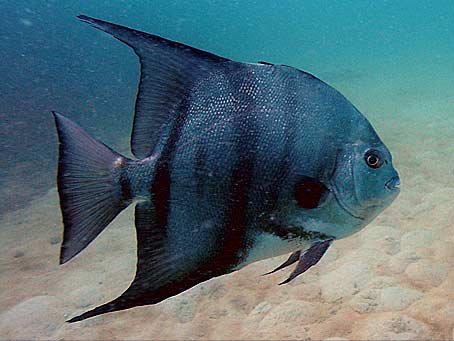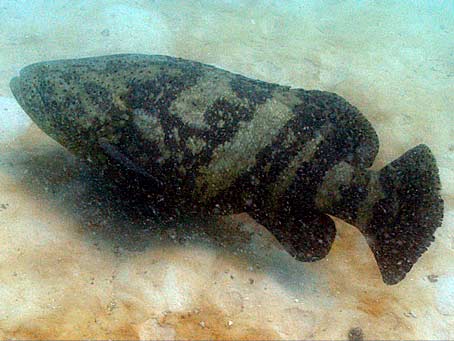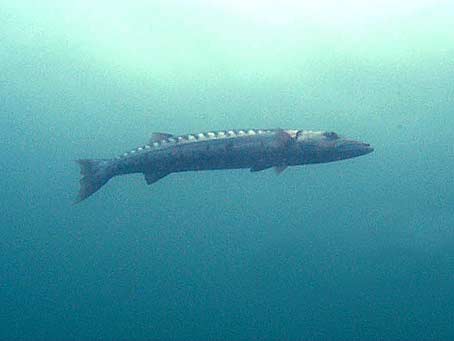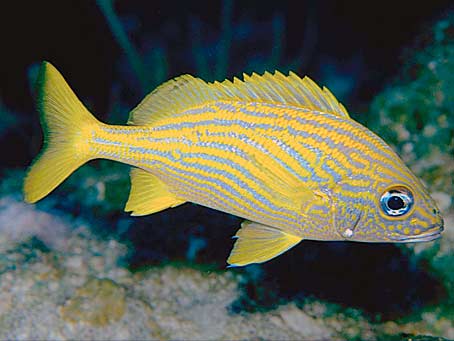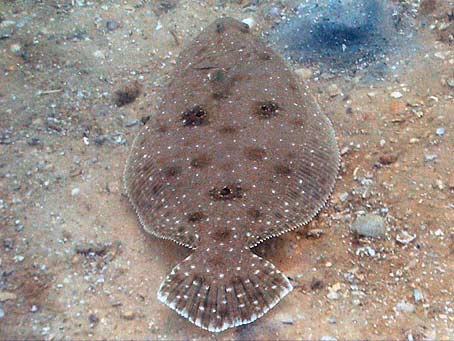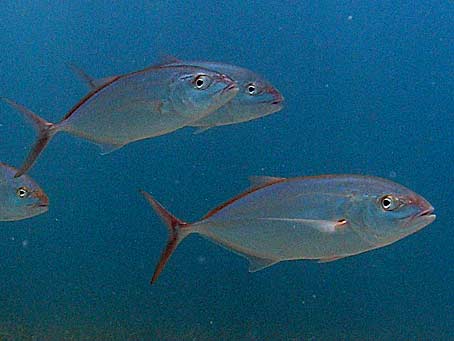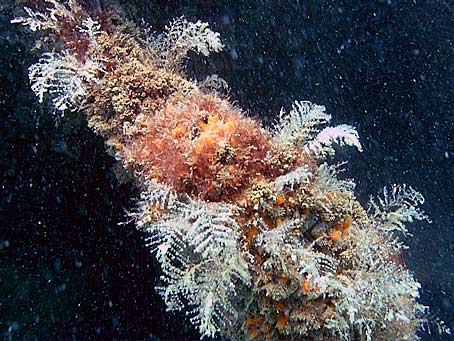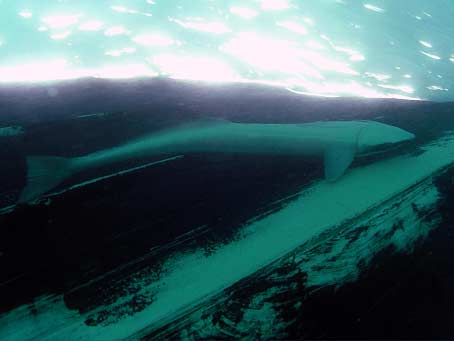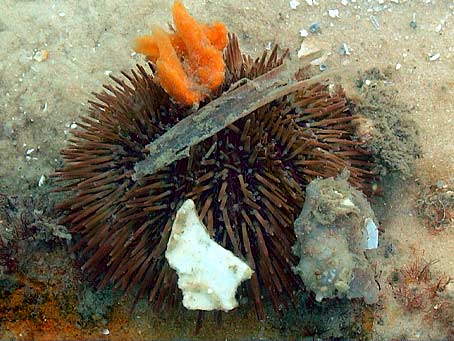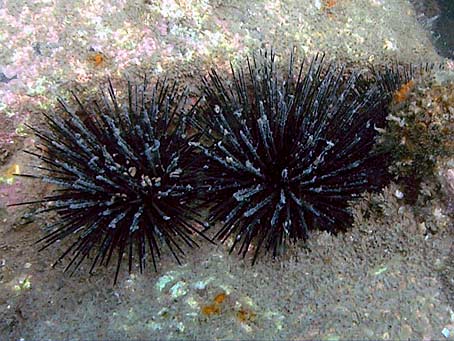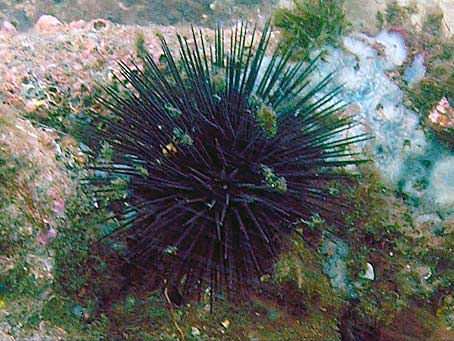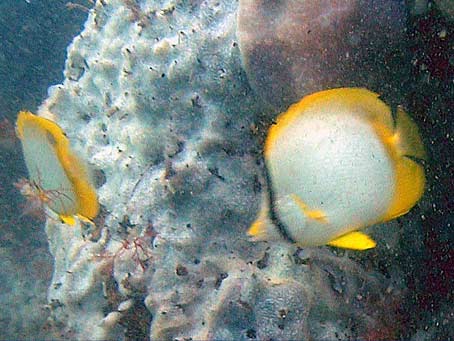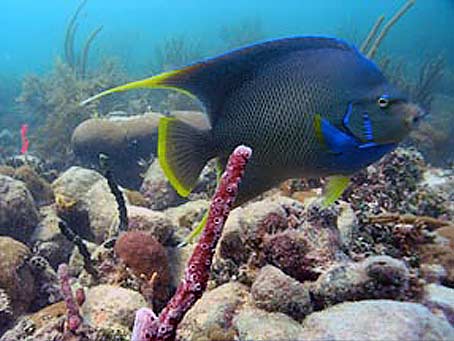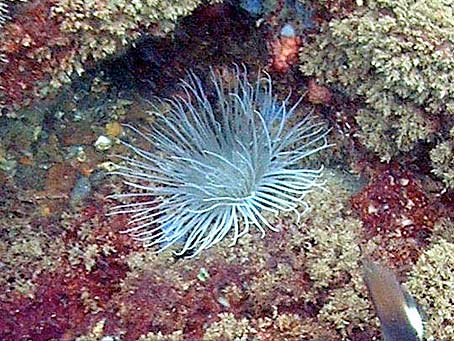This video contains images of the following marine life: Townsend Angelfish, Sea Whips, Snapper, Sheepshead, Soapfish, Yellow Jacks, Atlantic Spadefish, and Goliath Grouper. This video presents a fraction of the diverse marine life that calls Vamar home.
Angelfish – Angelfish come in a variety of colors, from grey and yellow to green, blue, and yellow, to black and yellow, banded, and plain. One identifiable feature of angelfish is the square pectoral fin. Angelfish often swim around the reefs in pairs, so if you see one, look for its mate.
bio1.jpg
Angelfish
Arrow Crab – The long pointed snout, triangular body, long slender spider-like legs, and golden brown color help distinguish this crab from other crabs. Arrow Crabs can often be found under ledges and on coral.
bio2.jpg
Arrow Crab
Atlantic Spadefish – Spadefish get their name because of their spade-shaped body and are often silver-gray with black fading bars running vertically along their body. These are schooling fish that often circle a SCUBA diver closely.
bio3.jpg
Atlantic Spadefish
Blue Tangs – similar to Doctorfish, the Blue Tang can change from bluish gray to dark brown as an adult and be bright yellow as a juvenile. They will be found on reefs and are often seen head down eating algae.
bio4.jpg
Blue Tangs
Bulb Anemone – The shape of the Bulb Anemones tentacle is what distinguishes this anemone from other anemones. The ends of the tentacles are enlarged and bulbous, and tipped with a thin, elongated wispy curl at the end. The tentacles are transparent, as is the body, and can range in color from chalky white to shades of green, and red.
bio5.jpg
Bulb Anemone
Gag Grouper – Juvenile Gag Grouper are commonly mistaken for Juvenile Black Grouper because of similar color, spotting, and body shape. As an adult, the body color can differ based on sex, age, and activity level.
bio6.jpg
Gag Grouper
Goliath Grouper – The largest fish observed on the reefs, Goliath Groupers can be recognized by their yellowish brown to dark, olive-green bodies and large mouths. A giant Goliath Grouper can grow up to seven feet in length.
bio7.jpg
Goliath Grouper
Great Barracuda – The Great Barracuda has a long, sliver, cylindrical body with a large underslung jaw, pointed teeth, and scattered dark blotches along the body. This fish will drift around reefs and shipwrecks and often follow divers in search of food or curiosity, but it will not harm you. Don’t be alarmed if you continually see the fish opening and closing its mouth, it needs to do this to assist with respiration.
bio8.jpg
Great Barracuda
Grunts – The common family name, Grunt, comes from the sound the fish make when they grind their teeth together which becomes amplified by their air bladder. Most of the fish in the Grunt family are colorful, and drift in schools throughout the shallow reefs during the day and feed at night.
bio9.jpg
Grunts
Gulf Flounder – Flounders are flat fishes that lie on their sides, not on their stomachs. These fish can often change the color of their bodies to look like the seafloor they are resting upon, they even enhance their camouflaged bodies by burying themselves in the sand or mud. Many flounders are difficult to distinguish, but the Gulf Flounder is recognized by the three large dark spots that form a triangle pattern on their body.
bio10.jpg
Gulf Flounder
Jacks – Jacks are silvery fish that like to swim in schools but can occasionally be found alone or amongst other schools of fish. You can often find them in open water over reefs and shipwrecks or feeding amongst the goatfishes and shadow stingrays.
bio11.jpg
Jacks
Hydroid – Hydroids are usually colonial and have branched skeletons that resemble ferns or feathers. Most species are neutral shades and range from brown to gray or black.
bio12.jpg
Hydroid
Moray Eels - Moray eels can come in various colors. They are often found in shallow reefs, rocky areas, and under shipwreck debris. Eels often open and close their mouths, do not worry, this isn’t to hurt you, it is an action required for respiration.
bio13.jpg
Moray Eels
Remora – Remoras or sharksucker are long fish that have foredorsal fin which has been modified to form a sucking disc on top of their head. This unusual fin allows for the fish to attach itself to the host and travel with ease. They are often found attached to sharks, rays, large fish, turtles, boats and even divers!
bio14.jpg
Remora
Reef Urchin – The Reef Urchin has pointed spines which range in color from violet to dark brown with a white ring around the base of the spine. The Reef Urchin can be found in shallower reefs, often hiding during the day in sheltered locations amongst other coral.
bio15.jpg
Reef Urchin
Rock-Boring Urchin – Rock-Boring Urchins have short, thick, dark pointed spines and a black to reddish-brown body. Urchins are usually found in shallow, rocky areas where they wedge themselves in between rocks. Be care when you see them, their spines can puncture skin.
bio16.jpg
Rock-Boring Urchin
Sea Urchins – Be careful when you see these! The Urchin has short, thick, pointed spines that hurt when you touch them. They are often Black to reddish-brown to purple. Urchins are often found in shallow rocky areas but can sometimes be found in deeper waters.
bio17.jpg
Sea Urchins
Sea Whip – Sea Whips are usually large colonies with long whip-like branches. They can come in a variety of colors, from yellow and creamy-white to purple. Sea Whips are located in a variety of habitats, usually found in a variety of inshore environments.
bio18.jpg
Sea Whip
Spotfin Butterflyfish – Spotfin Butterflyfish are often distinguished by their bright yellow fins and black stripe across their head and eyes. They have a silver-white body and have a small black dot on the outer edge of their rear dorsal fin.
bio19.jpg
Spotfin Butterflyfish
Townsend Angelfish – A Townsend Angelfish is a mix between a Queen Angelfish and a Blue Angelfish. The Townsend is distinguished by the blue crown, blue chest, and yellow edges of the tails and fins.
bio20.jpg
Townsend Angelfish
White anemones - Anemones can come in multiple colors and either living in a colony or alone. The body of an Anemone looks like a bouquet of tentacles with slightly enlarged tips that may be a slightly different color from the body of the tentacle. The anemone is not considered toxic to the human touch but it may sting a little or irritate the skin if you brush up against it.
bio21.jpg
White anemones
Whitespotted Soapfish – Two distinctive features of the Whitespotted Soapfish are the white spots located on either side of the fish and the white strip that runs from the forehead down to the bottom of the lip. The white spots are often outlined in black. This fish is commonly found against coral heads or leaning against ledges.
bio22.jpg
Whitespotted Soapfish


